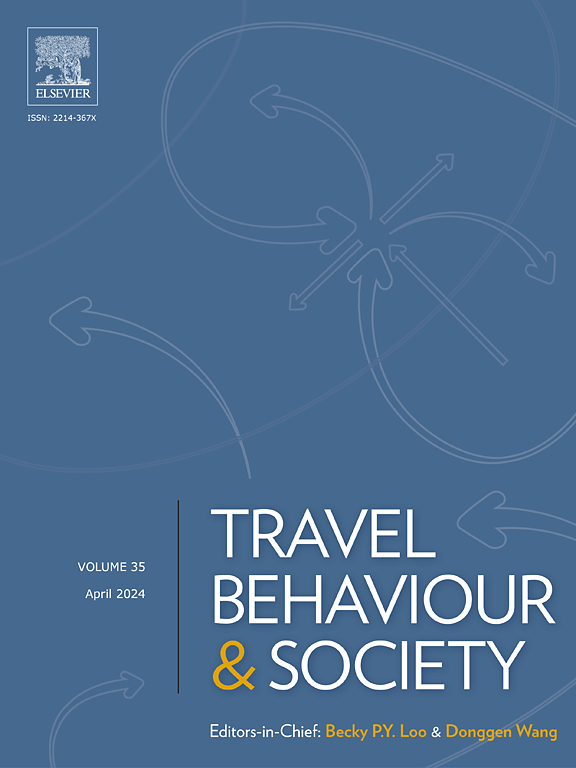利用联网车辆和地理信息系统数据分析铁路平交道口的驾驶员行为和碰撞频率
IF 5.1
2区 工程技术
Q1 TRANSPORTATION
引用次数: 0
摘要
铁路平交道口(RLC)是车辆交通与铁路之间的重要交叉路口,具有独特的安全挑战。本研究探讨了驾驶员行为对澳大利亚新南威尔士州铁路平交道口(半径 150 米内)安全性能的影响。研究整合了有关碰撞事故、列车运行和区域联络中心库存的历史数据库。此外,还利用联网车辆数据提取了车辆运动原始数据,包括加速度、减速度、G 力和速度。然后,确定了驾驶员的急刹车和猛打方向事件。采用随机效应飓风泊松模型来考虑过多的零和未观察到的异质性。我们确定了影响两个严重程度的车辆碰撞事故发生概率和次数的风险因素。非伤害性碰撞事故的结果表明,街道、主动控制类型、苛刻制动和僵硬转向与更高的零碰撞观测可能性相关,而列车频率则显示出相反的影响。研究还发现,多条轨道也是导致非伤害碰撞次数增加的原因之一。有趣的是,在越过障碍后,RLC 的急刹车与更多的非伤害碰撞事故相关。至于受伤碰撞事故,主动控制和硬转向与观察到零的可能性较高有关。然而,一旦越过障碍,与高速公路相交、有多条铁轨和急刹车事件对伤害碰撞事故频率的影响会越来越大。本研究的结论强调了有针对性的驾驶员教育计划和更大规模地实施主动控制措施的必要性。希望这些可操作的见解能够帮助政策制定者优先考虑在区域交通中心采取安全干预措施。本文章由计算机程序翻译,如有差异,请以英文原文为准。
Analysing driver behaviour and crash frequency at railway level crossings using connected vehicle and GIS data
Railway level crossings (RLCs) pose unique safety challenges as crucial intersections between vehicular traffic and railways. This study examines the effects of driver behavior on the safety performance of RLCs (within a 150-meter radius) in New South Wales, Australia. Historical databases on crashes, train operations, and inventory for RLCs were integrated. Also, vehicle movement raw data, including acceleration, deceleration, G-force, and speed, were extracted using the connected vehicle data. Then, the driver’s harsh braking and stiff steering events were identified. A random effect Hurdle Poisson model was adopted to account for the excessive zeros and unobserved heterogeneity. We identified risk factors affecting the likelihood and number of crashes at RLCs across two severity levels. Results of the non-injury crashes suggested that street, active control types, harsh braking, and stiff steering were associated with a higher likelihood of zero crash observations, while train frequency showed the opposite effect. It was also revealed that multiple tracks contributed to the increase in the number of non-injury crashes. Interestingly, after crossing the hurdle, harsh braking at RLC is associated with more non-injury crashes. As for the injury crashes, active control and stiff steering were associated with a higher likelihood of observing zeros. Nevertheless, once crossed the hurdle, intersecting with a highway, having multiple rail tracks and harsh braking events show increasing effects on the frequency of injury crashes. The findings of this study emphasize the need for targeted driver education programs and a larger-scale implementation of active control measures. It is hoped that these actionable insights can assist policymakers in prioritizing safety interventions at RLCs.
求助全文
通过发布文献求助,成功后即可免费获取论文全文。
去求助
来源期刊

Travel Behaviour and Society
TRANSPORTATION-
CiteScore
9.80
自引率
7.70%
发文量
109
期刊介绍:
Travel Behaviour and Society is an interdisciplinary journal publishing high-quality original papers which report leading edge research in theories, methodologies and applications concerning transportation issues and challenges which involve the social and spatial dimensions. In particular, it provides a discussion forum for major research in travel behaviour, transportation infrastructure, transportation and environmental issues, mobility and social sustainability, transportation geographic information systems (TGIS), transportation and quality of life, transportation data collection and analysis, etc.
 求助内容:
求助内容: 应助结果提醒方式:
应助结果提醒方式:


